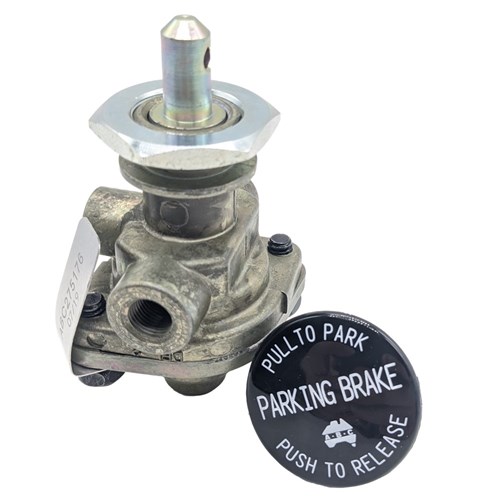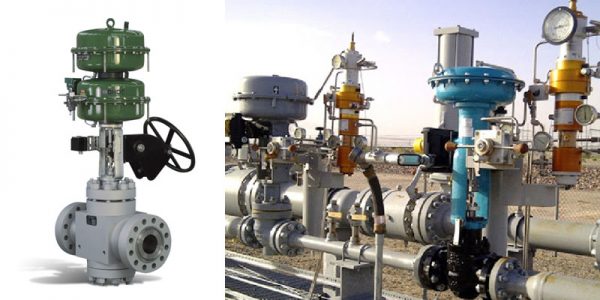Checking out the Functionality of Modern Control Valves in Industrial Applications
Achieve Seamless Combination and Control With High Quality Building Automation Controls
In the world of modern structure monitoring, the importance of high quality building automation controls can not be overemphasized. As innovation continues to advance, the combination and control of numerous systems within a structure have advanced to be a lot more reliable and innovative. The smooth operation and monitoring of lighting, A/C, safety, and various other building functions have actually become extremely important for improving owner convenience, power performance, and overall functional effectiveness. Nevertheless, the trip towards accomplishing real assimilation and control is a multifaceted one, with considerations ranging from system compatibility to cybersecurity. Embracing high quality building automation controls is not simply an issue of benefit but a critical crucial for companies intending to maximize their facilities' performance and sustainability.

Advancement of Building Automation Controls
Throughout the previous few years, the evolution of building automation controls has substantially changed the method structures are managed and run. Building automation systems primarily focused on fundamental functions such as regulating heating, air, and air flow conditioning (COOLING AND HEATING) systems. As modern technology progressed, these controls have come to be a lot more advanced, allowing for a bigger range of structure systems to be integrated and managed centrally.
The advancement of building automation controls has seen a shift towards even more intelligent systems that can adapt to transforming problems in real-time. This adaptability is crucial for enhancing energy efficiency and making certain resident comfort. In addition, modern-day building automation controls currently offer functions such as anticipating upkeep, remote surveillance, and data analytics, allowing center managers to make data-driven decisions to enhance structure performance.

Advantages of Quality Integration
The improvement in building automation regulates in the direction of even more smart systems has actually emphasized the significant benefits of high quality combination in enhancing structure operations and enhancing total effectiveness. Quality assimilation of building automation controls supplies numerous key advantages. Firstly, it brings about enhanced energy effectiveness by allowing various systems to interact perfectly, guaranteeing ideal efficiency and decreasing power wastage. Second of all, quality assimilation boosts owner comfort and performance by enabling individualized control over ecological settings like temperature level, lights, and air high quality. This modification can cause an extra comfortable and favorable working or living atmosphere. In addition, high quality combination streamlines upkeep and repairing procedures, as all systems are interconnected and can be monitored and regulated from a central interface. This central control also offers much better presence and understandings into structure efficiency, allowing aggressive maintenance and optimization methods. Generally, the advantages of high quality assimilation in structure automation controls are indisputable, supplying increased efficiency, comfort, and operational effectiveness.
Enhanced Customer Experience and Access
Enhancing customer communication with structure automation manages via instinctive style and boosted accessibility boosts the overall experience for passengers and center managers alike. By focusing on user experience, building automation systems can come to be a lot more effective and easy to use. Intuitive interfaces, clear navigating, and adjustable settings encourage customers to communicate with the controls you can try this out easily and effectively.
Accessibility functions play a crucial duty in making certain that all individuals, consisting of those with handicaps, can utilize the building automation manages effortlessly. Incorporating functions such as voice commands, tactile switches, and color-contrasted screens can enhance accessibility and make the controls a lot more inclusive.
Moreover, improved individual experience causes higher customer contentment, enhanced productivity, and better decision-making. Passengers can change ecological settings according to their preferences, while facility supervisors can efficiently take care of and keep an eye on structure systems - control valves. Generally, focusing on customer experience and access in building automation manages adds to an extra effective and seamless building setting for all stakeholders included
Lasting Practices Through Automation

Additionally, automation can promote the integration of sustainable energy resources such as photovoltaic panels or wind generators into building operations. By instantly changing energy use based on the accessibility of renewable resource, structures can additionally minimize their reliance on non-renewable resources. This more seamless integration of lasting methods not only profits the environment yet additionally improves the general operational effectiveness and cost-effectiveness of the structure. Through automation, structures can straighten with modern sustainability objectives and add to a greener future.
Future Trends in Building Control Systems
In expectancy of progressing modern technologies and evolving sustainability methods, the trajectory of building control systems is positioned to welcome transformative methods and cutting-edge remedies. One popular trend forming the future of structure control systems is the raised assimilation of Expert system (AI) and maker learning. These modern technologies allow buildings to adjust in real-time to changing conditions, enhancing energy consumption and boosting comfort for occupants. In addition, the Internet of Points (IoT) is transforming building control systems by linking sensors and gadgets to enhance and enhance operations performance.
An additional crucial pattern is the emphasis on cybersecurity measures to secure versus possible risks to building automation systems. As buildings become more interconnected, making sure robust cybersecurity procedures will certainly be important to secure delicate information and protect against unapproved access.
Additionally, the change towards cloud-based platforms is gaining energy, permitting systematized control and remote accessibility to building systems. This helps with less complicated surveillance, maintenance, and updates, enhancing the overall efficiency and versatility of structure control systems. As modern technology proceeds to advance, these trends are anticipated to form the future landscape of structure automation controls, driving advancement and sustainability in the built setting.
Verdict
Future trends in building control systems are most likely to concentrate on further improving automation capabilities for improved energy effectiveness and total efficiency. It is important for building proprietors and drivers to prioritize the fostering of quality building automation controls to enhance structure operations and achieve long-term sustainability goals.
In the world of modern-day structure administration, the relevance of top quality structure automation controls can not be overemphasized. In general, the advancement of structure automation controls proceeds to drive technology in the structure management sector, offering new possibilities for producing smarter and extra sustainable buildings.
The improvement in building automation regulates towards more smart systems has actually underscored the considerable advantages of high quality combination in maximizing building operations and enhancing total performance. Overall, prioritizing customer experience and access in building automation manages contributes to a more efficient and seamless structure setting for all look at here now stakeholders entailed.
It is necessary for building owners and drivers to focus on the fostering of high quality building automation regulates to optimize building procedures and accomplish long-lasting sustainability goals. - control valves